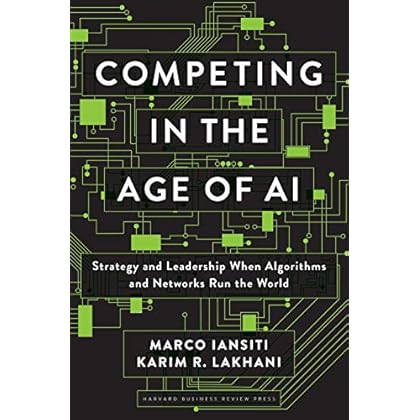Book Details Title: Competing in the Age of AI: Strategy and Leadership When Algorithms and Networks Run the World | |
Book DescriptionReview Named one of 16 New Business Books You Need to Read in 2020 by Inc. magazineAdvance Praise for Competing in the Age of AI:”Iansiti and Lakhani have written an important book that explains what’s required to rethink the firm and become an AI-first company. Anyone interested in the impact of AI should read this book.” — Satya Nadella, CEO, Microsoft“With the rise of our digital economy and artificial intelligence, the landscape of disruption is shifting in remarkable ways. Competing in the Age of AI is a compelling and mandatory read for leaders hoping to survive in the new world of business.” — Clayton Christensen, Kim B. Clark Professor of Business Administration, Harvard Business School; author, Wall Street Journal and >Businessweek bestseller The Innovator’s Dilemma“Competing in the Age of AI captures the essence of trends we’re seeing across the business landscape: If you’re not leveraging AI and machine learning to guide real-time decision making, you’re on the precipice of disruption from competitors who are.” — Dave Munichiello, General Partner, GV (formerly Google Ventures)“The ethical and business implications of AI are gradually revealing themselves as more and more AIs are plucked from research labs and deployed in the wild. Iansiti and Lakhani’s book is a great foundation for any business professional who hopes to succeed in this evolving environment.” — Tim Brady, Partner, Y Combinator“This book provides insight into working more effectively with AI experts and better equips executives to make important decisions in their AI journeys.” — Abidali Neemuchwala, CEO and Managing Director, Wipro Limited“Competing in the Age of AI provides a road map to some of today’s most important business changes driven by technological advances.” — Heidi Keefe, Partner, Cooley LLP“Competing in the Age of AI is important reading for entrepreneurs, investors, and leaders of all companies who hope to maintain and accelerate technological leadership.” — Jim Breyer, founder and CEO, Breyer Capital; former Member of the Board, Facebook and Walmart“Iansiti and Lakhani do a terrific job of avoiding buzzword pitfalls and focusing on practical advice on what AI can, and cannot, do to augment any business’s competitive strategy.” — Matthew Prince, cofounder and CEO, Cloudflare Read more About the Author Marco Iansiti, the David Sarnoff Professor of Business Administration at Harvard Business School, also heads the school’s Technology and Operations Management Unit and the Digital Initiative. Iansiti is an expert on digital innovation, with a special focus on strategy and business and operating model transformation. He advises Global 1000 companies on digital strategy and transformation and has conducted research on a variety of organizations, including Microsoft, Facebook, IBM, Amazon, Alibaba, and Google, among many others. He is the author of several books, including, with Roy Levien, The Keystone Advantage: What the New Dynamics of Business Ecosystems Mean for Strategy, Innovation, and Sustainability and One Strategy: Organization, Planning, and Decision Making, with Steven Sinofsky. He has authored more than 100 articles, cases, and notes, including “The Ecology of Strategy” (with Roy Levien) and “Digital Ubiquity,” “Managing Our Hub Economy,” and “The Truth About Blockchain” (with Karim Lakhani). Each was published in Harvard Business Review and selected as one of the top ten articles of the year.Karim R. Lakhani is the Charles E. Wilson Professor of Business Administration and the Dorothy and Michael Hintze Fellow at Harvard Business School. He is the founder and codirector of the Laboratory for Innovation Science at Harvard, the principal investigator of the NASA Tournament Laboratory at the Harvard Institute for Quantitative Social Science, and the faculty cofounder of the Digital Initiative at HBS. He is also Chair of the Harvard Business Analytics Program. He specializes in technology management and innovation. He is a coeditor of the books Revolutionizing Innovation: Users, Communities, and Open Innovation and Perspectives on Free and Open Source Software and the author of over 100 articles and case studies on the emerging digital economy and the changing nature of work and companies. His research has been featured in BusinessWeek, the Boston Globe, the Economist, Fast Company, Inc. magazine, the New York Times, the New York Academy of Sciences Magazine, Science, the Wall Street Journal, the Washington Post, and Wired.You can visit the authors at:Ageof.AIMarco Iansiti: twitter.com/marcoiansiti, linkedin.com/in/marcoiansiti/Karim R. Lakhani: twitter.com/klakhani, linkedin.com/in/ProfessorKL/ Read more Customers Review: Karim and Marco persuasively argue that everything is different in the age of AI. Fortunately, they also provide beautiful roadmaps for how to navigate and thrive in this new world. For everyone contemplating how to optimize machine learning, this is a must read. | |

